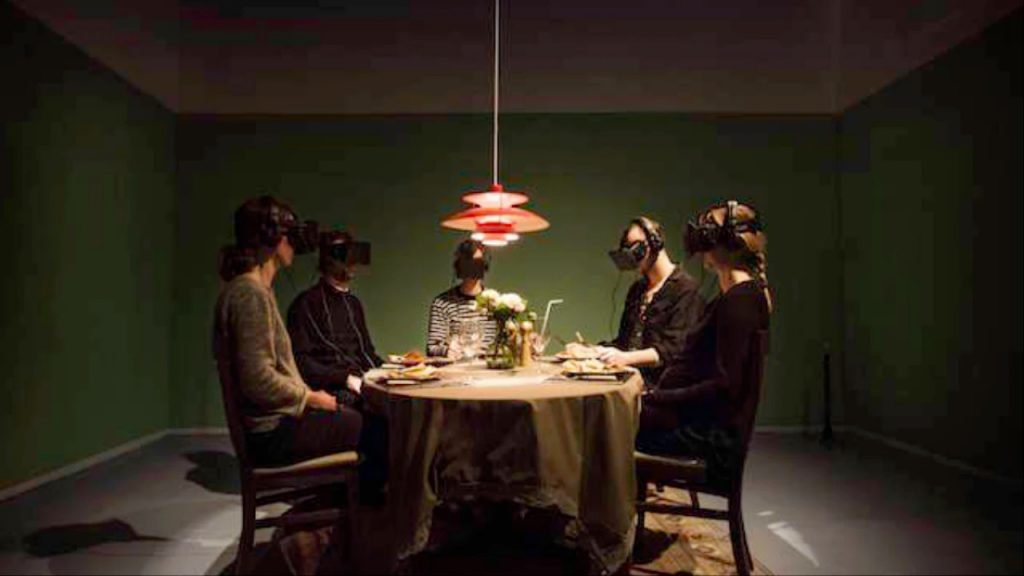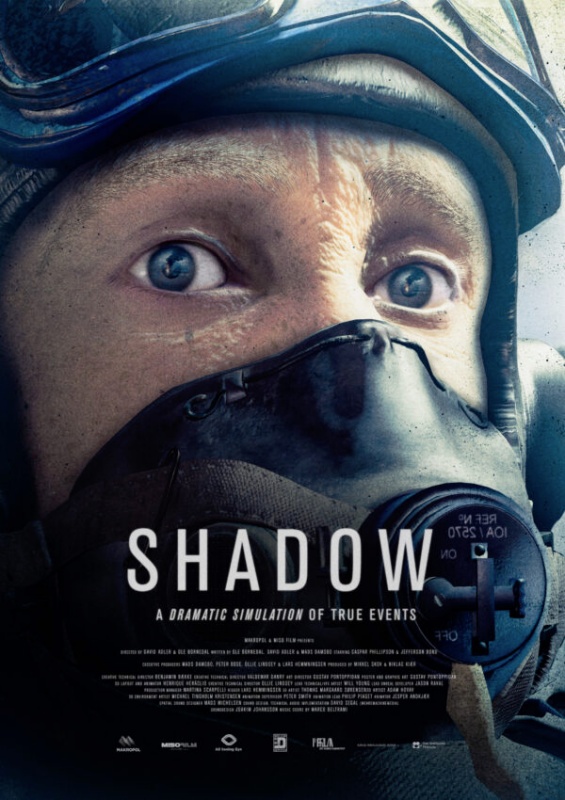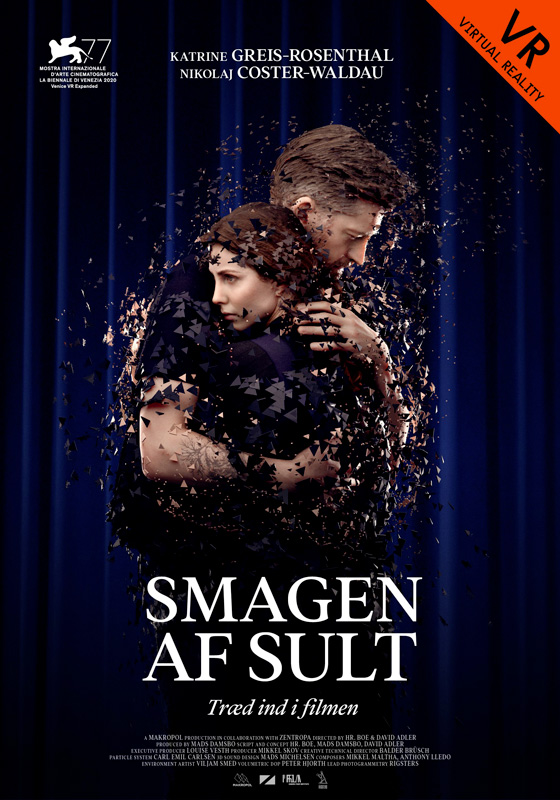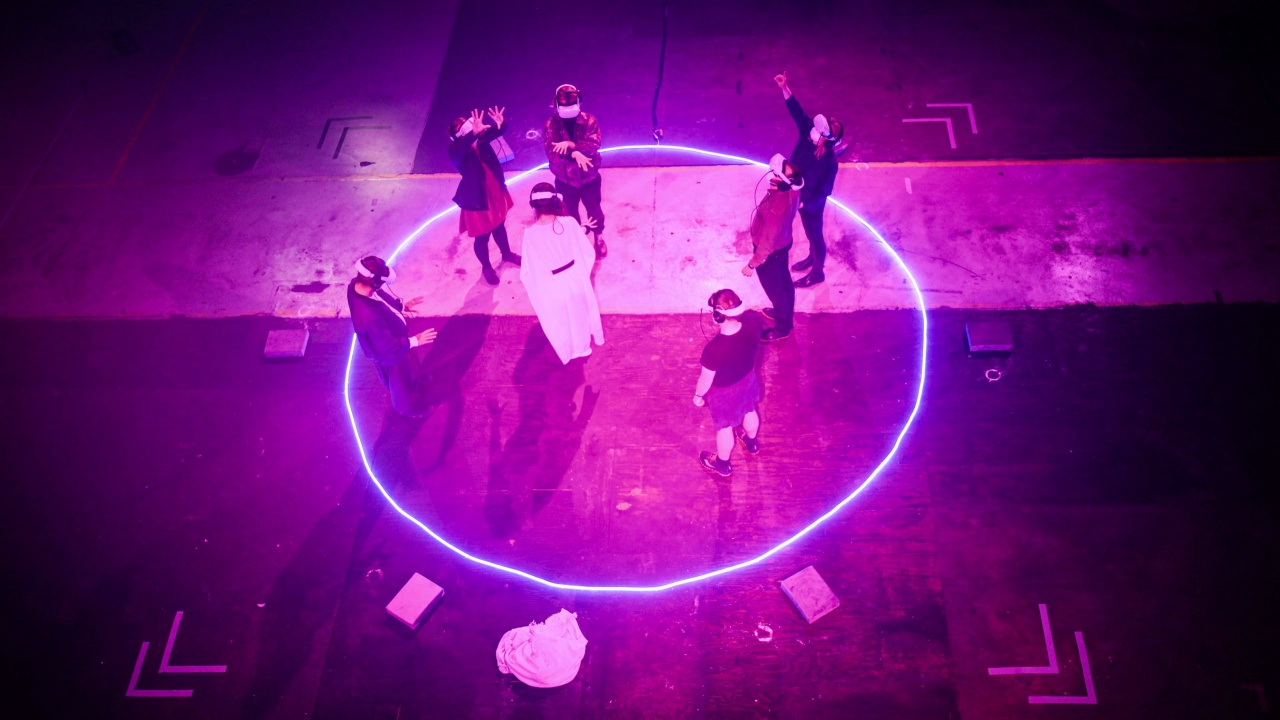Producer of digital content since 2011, the Danish company Makropol has experimented on all media: LBE since 2014, VR film… On the occasion of the release of their latest productions (END OF NIGHT, ARTIFICIAL AWAKENING, SHADOW…), we met Mads Damsbo, founder and producer, and Mikkel Skov, strategic director and producer at the studio.
How did everything start for Makropol?
Mads Damsbo – I probably have to take this one because I co-founded Makropol 11 years ago – 12, maybe even. Time goes by so fast! We were called a transmedia company. Do you remember that? Everyone wanted to be transmedia, that was a buzz word once. I guess the main idea of Makropol was always to tell a story through any given medium and not be obliged to to work in a traditional sense with traditional media. But if a story needed it, it could become an installation work, or it could become an online story or a podcast or whatever we needed. So that was our DNA in the beginning. When you look at our projects, you’ll see everything from websites to musical installations…
M. D. – What happened next? We fell in love with virtual reality (VR) when we heard about Oculus DK1. We first tried it on a project called THE DOGHOUSE (2014) by Johan Knattrup Jensen. And it opened a lot of creative doors because it not only was a film in a traditional sense, but it was certainly an experience where you could be one of the characters. The way it was installed, with this five person around a dinner table, made it possible for audiences to explore storytelling in a different way. It showed us that there were these massive possibilities of how to tell stories with immersive media. So we decided to keep pursuing that, obviously!

M. D. – That’s how Makropol sort of transitioned into immersive media with the help of Johan. And then that attracted people like Mikkel, for instance, as he joined us on a workshop that we were doing around a project called ANTHROPIA (2017), which was this very huge, ambitious 5-part installation piece. We all fell in love with the medium at that point, with a great team and beautiful ideas. Mikkel came to me and told me about his project THE END OF NIGHT.
Working on a 3-year XR slate
Mikkel Skov – The more we developed Makropol, the more I became a strategic director for the company, working really closely on the whole strategy within the XR industry. Coming from digital content and film, I could navigate within this field. At Makropol, we now have a “wave strategy” to produce innovative stories, or “expedition strategy” as we call it. We want to push the media as much as we can with a “wave” of three projects, produced at the same time. In 2020, we released a companion piece for a movie called THE TASTE OF HUNGER, directed by Christoffer Boe and David Adler. It premiered in Venice. Then we presented THE SHADOW VR (2021), also directed by David Adler. And the final film is a long narrative, THE END OF NIGHT (2021 – see our interview).
M. D. – Actually, there was a fourth one that came on top of it, which was called ARTIFICIAL AWAKENING. It was a performance-based piece, directed by Jakob la Cour and showcased at IDFA 2021. We were really exploring original long-form immersive storytelling, and this performative piece at the same time and the whole value chain in them. What happens when you not only produce it, but how do you actually see this potentially released, and market it, and so forth?
Mikkel Skov – The whole idea is to look at the entire possibilities we have in the industry, where we can go, instead of just saying, “okay, we want to produce a little prototype or we want to do a little thing”. In 2022, we just finished this slate of XR projects. We are on the top of the wave, looking for our next chapter. Still learning!

A sense of family, and independence
M. D. – Today Makropol is… just me! What we have to do to survive is that we have to hire when needed and fire when needed. And it’s a tough game. Above all, Makropol is an independent arthouse production company. There is no real return on investment that is substantial enough for it to be an actual running production house. We have a pretty big family of people that we work with, but they make their money in other places as well. Then we bring them all together for our productions, when it’s time. It goes with our idea of a slate of projects, to give enough work for everyone – for a limited time.
M. D. – For each project, we organise the production specifically. We’re pretty fortunate to have a well funded public system here in Denmark, that is also willing to take some chances with us and innovative artistic pieces. It’s not a huge budget that we can work with, of course. But they did go in and give production support to both TASTE OF HUNGER, THE SHADOW and END OF NIGHT. But then we needed co-production funding as well, especially for SHADOW.
M. S. – We built co-productions in France, England, Sweden, etc. It’s definity an opportunity for us to go more into co-productions and make strong collaboration partners all around the world. Today we can find really skilled companies in a lot of countries, where we can meet with these people who really want to push the industry, to see how far we can actually go creatively. That’s very positive!
M. D. – Now, we just finished 4 XR pieces. How do we want to position ourselves in order to make it sustainable? The main issue is that if you want it to be a full service production company with all the internal power, then the production level has to be quite high. We would have to not only produce a lot, we’d also have to produce at high budgets, consecutively. To be honest, I think it’s not good for the art itself. That’s why we’ve decided to rethink and restructure how we do this sustainably in the future – by slate when we can.

Viability, Interactivity, Distribution
M. S. – It’s the same for distribution; people are saying we know the industry better, because we’ve been around for a long time. But, if we do that, we can’t produce it right. We tried on THE END OF NIGHT, which ended up in theatres in Denmark (and won an award at CPH:PIX, sister event of CPH:DOX). We put 25 headsets in one cinema theatre. The cinema experience was amazing. We tried this, but it’s not our main job. That’s why we team up with Astrea for the future. We made a really, really good agreement to work with them on the distribution part of our work – and online distribution, which is becoming so much important for our industry right now.
M. D. – Our whole experiment of slate-producing was meant to – hopefully – prove that there was some viability in the XR creative process. And it hasn’t proven that yet, to be honest. I don’t think it will until we’ve sort of tested several different solutions of distribution. We need to find out the long tail of it, return on investment… We’re all very fascinated by the idea of innovation in storytelling. But to actually look critically at it, how does this actually become sustainable? One thing is, as storytellers, we have to leave the short film format. We have to move beyond it. Yes, it was easier to finance, to showcase. But on the market as a whole, in the sort of the experience market in virtual reality, this will not be sufficient enough. You’ll have to tell stories that are long form. You’ll have to tell stories that are potentially more interactive. With replayability. Otherwise your project won’t be able to compete against a narrative game or something similar.
M. D. – In doing that, your projects need to reach a level of financing that can sustain a long form project. So we’re talking different budget sizes, we’re talking international market looking. How would you then reach the North American market? Because you need to be there as well. Does that mean you need A-list actors, i.e.? It’s a different game. The development time from now on will be much longer and we’ll release projects in a less frequent rhythm because they will be bigger and more substantial.
M. D. – Third and finally, it’s super important that no project, which goes into production, can go into production without a real distribution agreement or a distribution strategy. It’s too hard to release something without the certain knowledge of payback.

M. S. – This is where our strategy works. With our projects, and the latest END OF THE NIGHT, we got a lot of recognition worldwide. On top of it, one of the most important things for me as a producer in that last project was to see that we actually made a creative use of technology and not the other way around. We could have hands, we could have interaction, we could have a lot of things. But we really have to focus on the narrative. That was a big win for us. We have really thought the creativity into the core of the project – and not just make a gimmick experience out of it. And that made us super proud, of course. That was our big vision to show that potential creatively. We hope that we can inspire a lot of other people as well.



Leave a Reply
You must be logged in to post a comment.